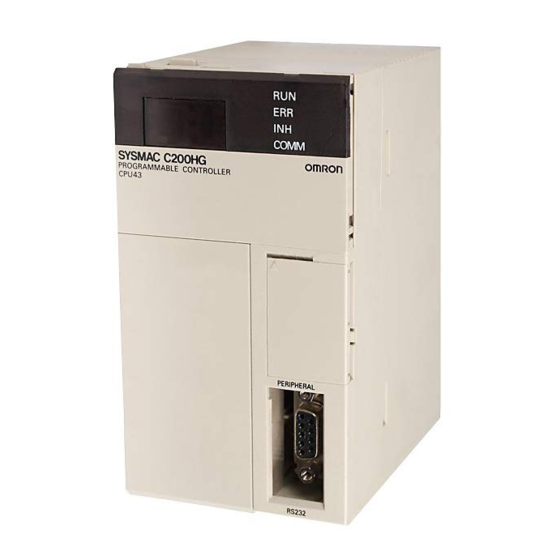
Omron C200HX Operation Manual
Hide thumbs
Also See for C200HX:
- Programming manual (448 pages) ,
- Specification (18 pages) ,
- Specification (17 pages)












Need help?
Do you have a question about the C200HX and is the answer not in the manual?
Questions and answers